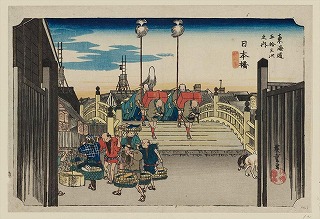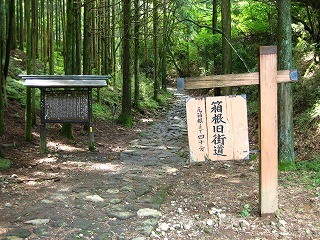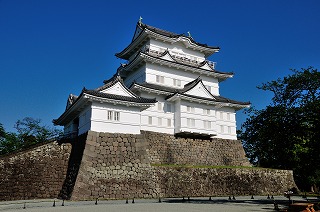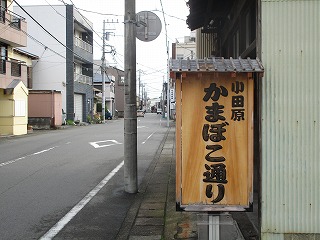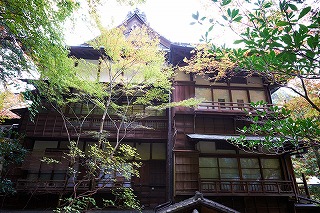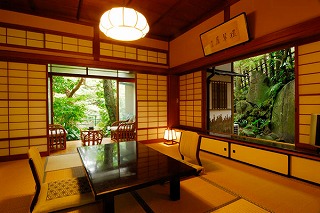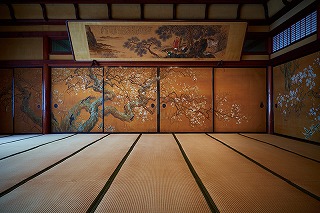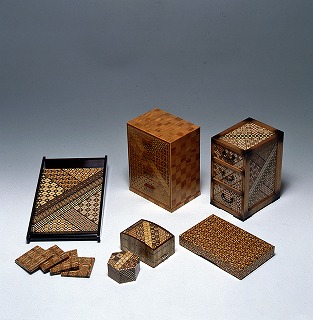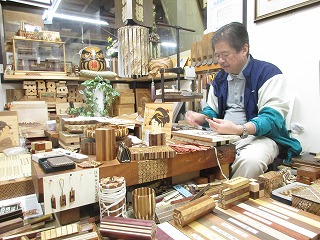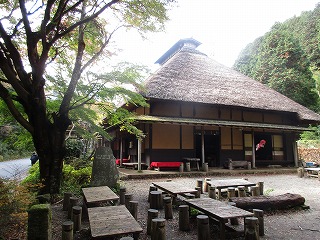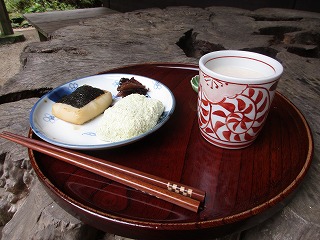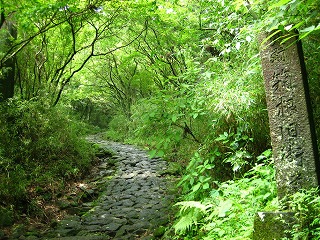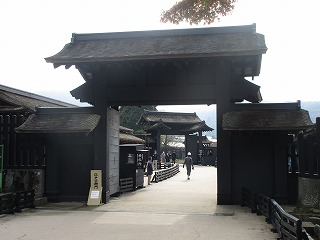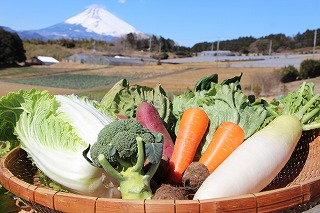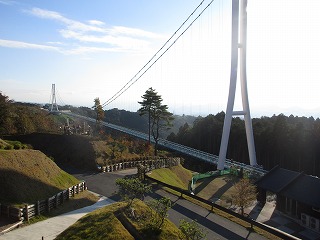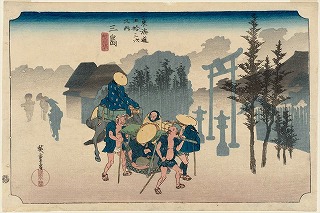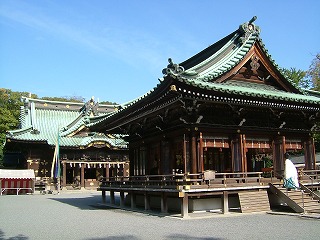実施日 : 2018年12月03日(月) - 04日(火)
Notice: Hakone Hachiri Press Tour
投稿日 : 2018年11月16日
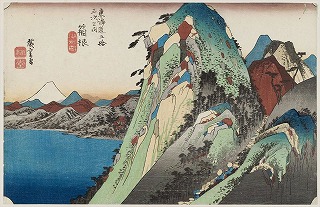 With its hot springs, beautiful nature, and convenient location only about an hour and a half from Tokyo, Hakone is one of Japan’s most famous tourist destinations, visited by approximately 20 million domestic and overseas tourists annually.
With its hot springs, beautiful nature, and convenient location only about an hour and a half from Tokyo, Hakone is one of Japan’s most famous tourist destinations, visited by approximately 20 million domestic and overseas tourists annually.
Throughout the Edo period (1603-1868), the Tokaido road connecting Edo and Kyoto was the most important road in Japan for both transportation of goods and for travelers. The most difficult section of this road was said to be the “Hakone Hachiri.” This was a steep road that was eight (hachi) ri in length (approximately 32 kilometers), from the Odawara-juku station located on the Tokyo side to Mishima-shuku on the other side of Hakone Pass (846 meters above sea level). To support the traffic passing through the area, the road was the greatest stone-paved road in Japan at the time, and a unique culture developed along the road, including post stations, tea houses, sekisho (checkpoints) and trees linings the road.
The old Hakone road, paved with stone and lined by cedar trees, remains to this day along with the Hakone Sekisho as a historical site providing a glimpse of the Edo period, and more and more tourists from Japan and abroad have been enjoying walking the road in recent years. Local products known throughout Japan, such as Odawara’s chochin lanterns and kamaboko (a type of fish loaf/cake), and Hakone’s yosegi-zaiku, first grew to popularity as souvenirs and items carried by travelers along the Hakone Hachiri. With the railroad passing through in the Meiji period, the number of travelers along the Tokaido road declined, and villages were no longer able to sustain themselves by catering to travelers. By cultivating more land instead, those villages are now famous for their quality vegetables.
Hakone’s history, changing from medicinal hot springs for ordinary people in the Edo period to an international hot springs resort, represents the modernization of Japan as a whole in the 150 years since the Meiji Restoration. This press tour, commemorating the Hakone Hachiri’s recognition as Japan Heritage by the Agency for Cultural Affairs, will visit the historical sites of the Hakone Hachiri and learn about them from experts. The tour will also see multi-level wooden ryokan still in use which was built as Hakone entered the modern era and began to transform into a hot springs resort, a tea house in business for 400 years welcoming tourists from both Japan and abroad, artisans keeping traditional crafts alive, and efforts to promote the town through the revival of local culture developed along the road, in order to examine the depths of the Hakone Hachiri’s appeal.
[Tour Details]
1. Briefings on the Old Tokaido Road and Hakone Hachiri
The Tokaido road was the key transportation artery in Japan during the Edo period, with 53 post stations along its length of 492 kilometers. Many famous sites are located along the road, frequently appearing in poems and in ukiyo-e, such as The Fifty-three Stations of the Tokaido series by Utagawa Hiroshige. Historical townscapes and views which can be seen in these ukiyo-e remain to this day along the Tokaido, and recently walking tours from Nihonbashi in Edo (Tokyo) to Kyoto have become popular.
The Hakone Hachiri is made up of two sections, the four ri from Odawara-juku to Hakone-juku and the four ri from Hakone-juku to Mishima-shuku. The steep mountain roads were considered the most difficult part of the Tokaido, and are separated by the Hakone Pass into the east slope with Odawara and Hakone, and the west slope with Mishima. The Hakone Hachiri is also the only place in Japan where you can recreate an Edo-period journey, complete with castle towns, post stations, paving stones, trees lining the road, tea houses, and checkpoints.
The tour will begin with a briefing from Director Koji Tanaka of the Zenkoku Kaido Koryu Kaigi about the role of the Tokaido during the Edo period, and the recent popularity of walking old roads. This will be followed by Chief Curator Masato Tsuji of the Mishima City Local Cultural Property Office, who played a central role in having the Hakone Hachiri recognized as Japan Heritage, describing the history of the Hakone Hachiri and what it is like today.
(Right picture provided by Zenkoku Kaido Koryu Kaigi)
2. Odawara-juku
During the Edo period, Odawara developed both as a castle town and as one of the biggest post stations along the Tokaido. With approximately 90 hatago (businesses providing food and accommodations to travelers), the number of stores selling travel goods and souvenirs expanded and those products became famous throughout Japan.
One of those products that is known nationwide even now is Odawara kamaboko (a type of fish loaf/cake). Due to it keeping well, travelers crossing Hakone Pass and hot spring visitors appreciated this kamaboko, and it became known throughout Japan. One section along the Tokaido is home to the main stores of 12 traditional kamaboko producers, and is known affectionately as Odawara Kamaboko Road. With kamaboko consumption declining and the business environment worsening, the young owners of these traditional businesses formed the Kamaboko Road Revitalization Group in 2014. They are working on activities to help revitalize the town, such as recreations of the scenery when it was a fishing town in the Edo and Meiji periods.
From the tower of Odawara Castle, the group will look down at the layout of the castle town of Odawara. Next, Chairman Moritaka Tashiro of the Kamaboko Road Revitalization Group will explain the origins of Odawara kamaboko and the efforts of the group, followed by the group visiting Kamaboko Road to see them busily making kamaboko for New Year’s meals.
(Left picture provided by Zenkoku Kaido Koryu Kaigi)
3. The History of Hakone Hot Springs and Its Large Collection of Wooden Hotel Buildings
Hakone’s hot springs have a long history, with Hakone Yumoto Onsen said to have first been opened in the Nara period (710-794), and the “Seven Hot Springs of Hakone” attracting people in the Edo period as medicinal hot springs. After the Meiji Restoration, even more hot springs were developed, and so was transportation between the different hot springs.
At that time, many ryokan owners invited master architects to Hakone, where they demonstrated their skills using the finest materials from around Japan. As a result, in December 2017, the “Group of Large-scale Wooden Hotel Facilities in Hakone” was chosen as one of the Japan ICOMOS National Committee’s “20 Historical Sites of the 20th Century.” Many of these multi-level wooden buildings, rare even in Japan, continue to be used to this day.
Bansuiro Fukuzumi is a ryokan in business since 1625. One of the current buildings, completed in 1879, is basically Japanese in design, but is a rare example that also includes some aspects of Western design that were brought in with the Meiji Restoration. In 2002, it was the first ryokan to be designated as an Important Cultural Property while still operating. Kansuiro is another ryokan with approximately 400 years of history. The four-floor wooden building built around 100 years ago demonstrates the height of construction techniques at the time, and is designated as a Tangible Cultural Property. The guest rooms and hallways are decorated in a Japanese style, but the building also uses some of the first tile and stained glass to have been imported to Japan.
The tour will hear from Mr. Yasuhiro Suzuki, an authority on Hakone history and director of the Hakone Town History Museum, about the origins of Hakone’s hot springs as medicinal hot springs for the residents of Edo. There will also be an opportunity to see materials and places not generally open to the public, including a valuable picture scroll (Shichito no Shiori) describing the history of Hakone hot springs and what they looked like in the Edo period. Visiting the historic buildings of Bansuiro Fukuzumi and Kansuiro which were built during the modernization of Hakone, the tour will be able to experience the history of Hakone as it developed from a town with medicinal hot springs to a popular hot springs resort.
(Pictures provided by Kansuiro)
4.Hakone Yosegi-zaiku
Hakone yosegi-zaiku is a type of wood art made using delicate geometric designs to show off the unique colors and textures of the various types of trees found on Mt. Hakone. This unique woodworking technique was developed near the end of the Edo period by Mr. Nihei Ishikawa of Hakone Hatajuku village. As the midpoint for crossing Mt. Hakone, Hatajuku had many travelers passing through during the Edo period. Yosegi-zaiku became popular as a side job for kago (litter/palanquin) bearers, and were sold at hot springs and tea houses along the road, leading to yosegi-zaiku becoming known throughout Japan. With Japan opening up to foreign trade at the end of the Edo period, yosegi-zaiku also began to be exported outside Japan.
In 2005, six young artists who had become entranced by the beauty of yosegi-zaiku established the group Zoukibayashi. While preserving the traditions and craftsmanship which has been passed down since the Edo period, the group has incorporated their own sensibilities into creating yosegi-zaiku that fits with modern lifestyles.
The tour will hear from Mr. Ichiro Ishikawa (a certified Dento Kogeishi [traditional artisan]), descendant of Mr. Nihei Ishikawa, creator of Hakone yosegi-zaiku, about the history and techniques of Hakone yosegi-zaiku. He will also provide a demonstration. Mr. Yuta Shimizu and Mr. Yuki Ishikawa, members of the avant-garde yosegi-zaiku group Zoukibayashi, will speak about why they decided to make yosegi-zaiku and what efforts they are involved in now.
(Left picture provided by Zenkoku Kaido Koryu Kaigi)
5.Hakone Amasake-chaya
Many tea houses existed along the steep slopes of the Hakone Hachiri, providing places for travelers to take a break. Hakone Amasake-chaya remains in business to this day on the long, difficult slope from Odawara to Hakone, having first opened around 400 years ago near the beginning of the Edo period. With the number of travelers decreasing since modern roads were built starting in the Meiji period, the other tea houses that used to be in the area all left. Amasake-chaya persevered through difficult times when only one customer would come in 10 days, and is now the only tea house left. It is still possible to sit around the hearth and drink their famous amasake (non-alcoholic fermented rice drink), made with the same method it was in the Edo period.
Mr. Satoshi Yamamoto (51) is the 13th-generation owner of Amasake-chaya. After working as a chef at a traditional ryotei restaurant in Kyoto, he returned to eventually take over the tea house in his 30s. “Customers will tell me that they cannot forget the taste of the amasake they drank after walking along the difficult slopes of Hakone. With people relying on me like that, I can’t have the tea house close on my account.” Every day without fail, he begins preparations before dawn, and opens the tea house in the early morning to welcome travelers.
Having appeared in guidebooks, Amasake-chaya now welcomes quite a few guests from overseas as well. Mr. Yamamoto will talk of the history of Amasake-chaya, providing travelers with a place to relax for 400 years, and about his feelings on protecting this traditional tea house.
6.Hakone Stone-paved Old Road, Ichirizuka, Cedar Avenue, Hakone Sekisho
The road of the Hakone Hachiri was extremely difficult, frequently turning to mud, and though bamboo was laid along the road to prevent slipping, it had to be changed frequently. In 1680, the shogunate paved the road in stone, making it the most impressive stone-paved road in Japan at the time. The road had dirt markers called ichirizuka every ri (around four kilometers) acting as milestones for travelers, and in order to both ensure a consistent road width and to protect travelers from the summer sun and winter wind, cedar and pine trees were planted along the road. These features from the Edo period can still be seen today along the old Hakone Hachiri road, with moss-covered stone pavement and ichirizuka, and over 400 cedar trees up to 350 years old.
Hakone also had a sekisho (checkpoint) to watch travelers along the road. The Tokugawa shogunate had 53 sekisho located throughout Japan, and the Hakone sekisho was the largest among them, as it had been made for the defense of Edo. 2019 will mark 400 years since the Hakone sekisho was established in the current location between Lake Ashinoko and a mountain. The Edo-period sekisho was reconstructed in 2007, making it possible to see what it looked like at the time.
The tour will hear from Hakone Sekisho Director Koichi Owada, an expert in Hakone history, while visiting historical artifacts remaining along the old road including the Hatajuku village ichirizuka, moss-covered paving stones, and the cedars lining the road. At the Hakone sekisho, the group will hear about its role in protecting Edo and controlling the daimyo, and tour the reconstructed sekisho.
(Top left picture provided by Zenkoku Kaido Koryu Kaigi)
7. Goka Shinden (five newly created villages)
On the west slope, from Hakone Pass to Mishima-shuku, is a group of five villages. These villages were newly created when the Tokugawa shogunate built the route over Mt. Hakone, to support travel along the road, and prospered during the Edo period with tea houses, hatago, and transportation businesses. After the Meiji period, the number of travelers decreased with the opening of the Tokaido train line, and to ensure their livelihood the villagers began cultivating the land, transforming the villages into purely farming villages.
Fields which were first planted at that time are now known for producing quality vegetables under the brand of Hakone Seiroku Mishima Yasai. The volcanic ash from Mt. Fuji and the reddish soil grow vegetables of good quality and flavor, many of which are shipped to the Tokyo area. In particular, the May Queen potatoes are the most expensive of their kind at vegetable markets throughout Japan. Daikon being dried out from late November through early December for use as pickles has become a staple of winter scenery in Mishima.
The tour will visit one of the five villages, learning about its history which is intertwined with that of the Hakone Hachiri, and hear from Mr. Ryuji Miyazawa, a farmer who grows Hakone Seiroku Mishima Yasai produce. There will also be an opportunity to see daikon being sun-dried.
(Pictures provided by JA Mishima Kannami Agricultural cooperative association)
8. Mishima Skywalk
The Mishima Skywalk opened in December 2015, and at 400 meters is Japan’s longest pedestrian-only suspension bridge. In an effort to restore the vitality the area had in the Edo period with all those travelers, local company Fujico Co., Ltd. built the Skywalk along the Tokaido at a cost of four billion yen, creating a new landmark for Mishima. Mt. Fuji, Suruga Bay, and the mountains of Izu can all be seen from the bridge, and less than three years since opening it has already been visited by three million people.
The tour will visit the bridge, a new tourist destination for the area which has a panoramic view of Mt. Fuji and Suruga Bay.
9. Mishima Taisha
Mishima-shuku, one of the 53 post stations of the Tokaido, takes its name from Mishima Taisha, a Shinto shrine. Facing the Tokaido, it was visited by daimyo and other travelers going to and from Edo during the Edo period, where they prayed for safety before the dangerous journey over Mt. Hakone or came to give thanks after having successful passed over Mt. Hakone. In Edo-period ukiyo-e artist Utagawa Hiroshige’s The Fifty-three Stations of the Tokaido series, Mishima-shuku is represented by travelers leaving in the early morning fog for Hakone-juku, with the torii gate in front of Mishima Taisha in the background.
A priest with Mishima Taisha will explain its history, followed by journalists experiencing formal worship inside the shrine’s main hall.
(Right picture provided by Zenkoku Kaido Koryu Kaigi)
[Tour Itinerary]
1. Dates: Monday, December 3 to Tuesday, December 4, 2018
2. Schedule:
*The schedule below is still in progress and subject to change without notice.
<Monday, December 3>
7:56-8:30 Tokyo Station-Odawara Station (Kodama 637)
8:50-9:40 Odawara Castle
10:00-10:50 Briefing on the Old Tokaido Road, and Hakone Hachiri
10:45-11:30 Odawara Kamaboko Road
12:00-12:30 Lunch
12:40-13:50 Briefing on the history of Hakone hot springs, Tour of Bansuiro Fukuzumi Inn and spring source dating back to Nara Period
14:10-15:00 Tour of Kansuiro Inn
15:20-16:30 Hakone yosegi-zaiku
16:50 Arrive at Hotel
17:30- Reception (Interview with the Mayor of Odawara)
<Tuesday, December 4>
8:30 Leave Hotel
9:00-9:40 Hatajuku Ichirizuka, Stone-paved Road
9:50-10:50 Hakone Amasake-chaya
11:00-11:20 Cedar Avenue
11:25-12:25 Hakone Checkpoint
12:40-13:10 Lunch
13:30-14:40 Goka Shinden villages
14:50-15:50 Mishima Skywalk
16:15-17:15 Mishima Taisha Shrine
17:56-18:40 Mishima Station-Tokyo Station (Hikari 474)
3. Qualification: Bearer of Gaimusho Press Registration Card
4. Cost: 10,000 yen per person including transportation, accommodation (breakfast included), lunches, and dinner (Day 1).
*The following cancellation fees will apply:
-Cancellation before 3 p.m., Friday, November 30: 5,000 yen
-Cancellation after 3 p.m., Friday, November 30: 10,000 yen (full amount)
5. Participants: Limited to 10 applicants. (Only one reporter or one photographer from each company, but two participants from each TV team will be acceptable.)
*If the number of applicants exceeds 10, an upper limit may be set on the number of participants from each country/region.
6. FPCJ contacts: Junya Sugawara (Mr.)
(Tel: 03-3501-3405, E-mail: ma@fpcjpn.or.jp )
7. Remarks:
(1) This tour is organized by the Hakone Hachiri Kaido Tourism Promotion Association, and planned and operated by Zenkoku Kaido Koryu Kaigi (National Kaido Network) and the FPCJ.
(2) The schedule is subject to change without notice.
(3) This tour will require participants to bear part of the cost, but is not a profit-making venture.
(4) Neither the City of Sapporo nor FPCJ will be liable for any inconvenience, trouble or accidents that might occur during the tour.
(5) There may be some restrictions on photographing and filming at the tour sites. Please follow the instructions of the staff in charge.
(6) This press tour is intended to provide opportunities for news coverage. We request that all participants send a copy of the content of their coverage (article, video, or audio in the case of radio) to the Hakone Hachiri Kaido Tourism Promotion Association through the FPCJ after their reports are published or aired. When your report is in a language other than English or Japanese, we also ask you provide a summary in English or Japanese. With receiving your application, we assume that you agree to these conditions.


